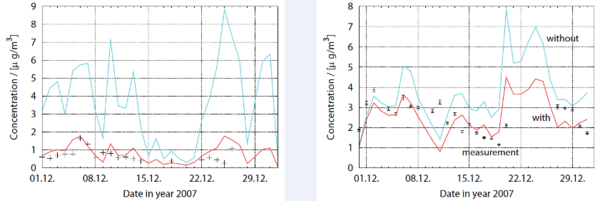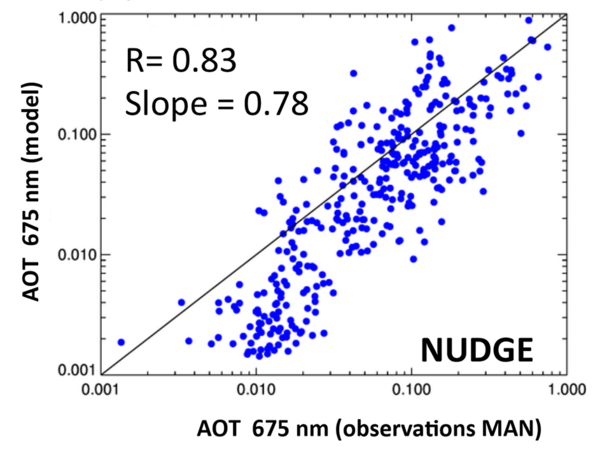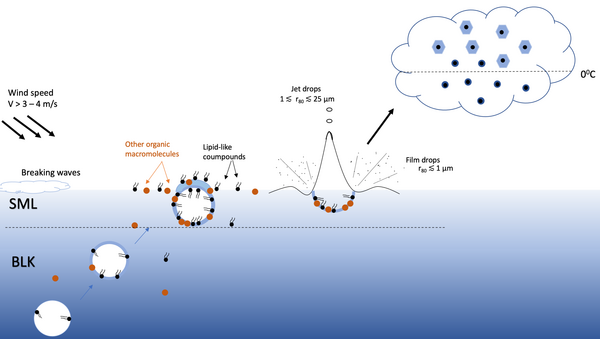

Primary marine aerosol (PMA) consisting of sea salt and organic enrichments dominates the aerosol mass over the oceans and therefore has a strong influence on all atmospheric processes involving aerosols. At 3 to 18 Tg/year, it has the highest emission rates of all aerosol types, but also causes the greatest uncertainties in quantifying its contribution to global aerosol pollution as well as global emission rates. PMA is emitted by the bursting of air bubbles at the sea surface as a result of breaking waves. This process is influenced by many parameters, with wind speed determined as the dominant factor. In recent years, the influence of sea surface temperature on this process has been considered in more detail, so that several functions now exist that allow the influence of this effect to be integrated into models. Model results agree better with measured values when the temperature effect is taken into account.
In the atmospheric models used at TROPOS, the aerosol size distribution is described with a spectral mass-based approach using 15 logarithmically subdivided bins from 10 nm to 10 µm. The PMA emission rates include both sea salt and organic material.

Fig. 1: Sodium concentration in PM10 calculated with (red) and without (blue) temperature dependence of PMA emisisones for Auchencorth Moss (left) and Sao Vincente (right) compared with observations (black).
The temperature-dependent PMA parameterization was implemented in the regional model COSMO-MUSCAT for case studies that can be compared with in-situ measurements (Fig. 1), and in the global aerosol climate model ECHAM-HAM to test the global distribution and climate impact of the new PMA parameterization (Fig. 2).

Fig. 2: Comparison of model results from the ECHAM-HAM global aerosol climate model with observations in the context of marine aerosol optical thickness measurements in the AERONET Maritime Aerosol Network. (Figure from Tegen et al., 2019, doi.org/10.5194/gmd-12-1643-2019).
In addition to sea salt, PMA also contains organic components that accumulate in surface films at the sea surface and are emitted with the aerosol. It is assumed that these aerosol components have ice-nucleating properties and are thus relevant for climate and precipitation formation. The primary emitted marine organic aerosol is the focus of research on Arctic amplification. Specifically, work is being done on an extended emission scheme for the ocean that takes into account different organic species groups. In particular, potentially ice-active compounds such as marine carbohydrates are of interest. In addition, unlike before, the organic fraction will be treated separately from sea salt to account for differences in size population and cloud activation ability. Intensive measurements by colleagues from the Atmospheric Chemistry department on the Cape Verde Islands and in the Arctic, including from the MOSAiC Drift Expedition 2019/20, will be incorporated into the work.

Fig. 3: Illustration of the formation of primary marine aerosols (PMA). Organic substances accumulate in rising air bubbles in the bulk water (BLK) and sub-micro layer (SML) and, together with sea salt, enter the atmosphere as aerosol particles through spray formation. Depending on their chemical and physical properties, they can influence cloud and precipitation formation.
